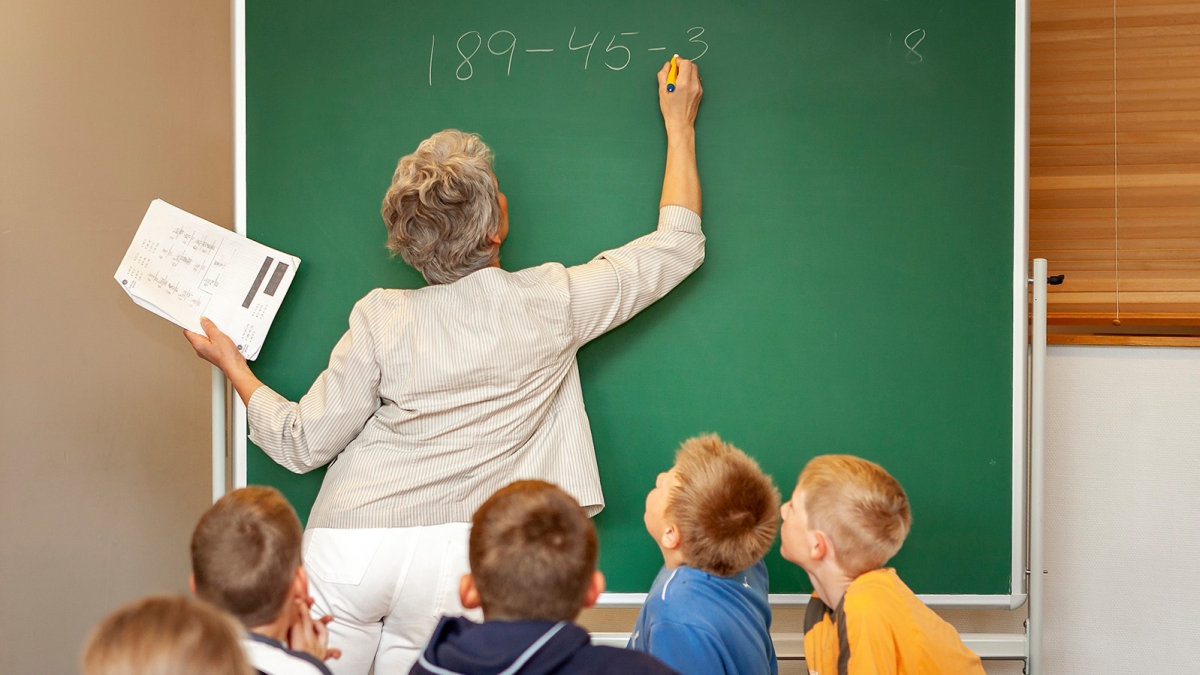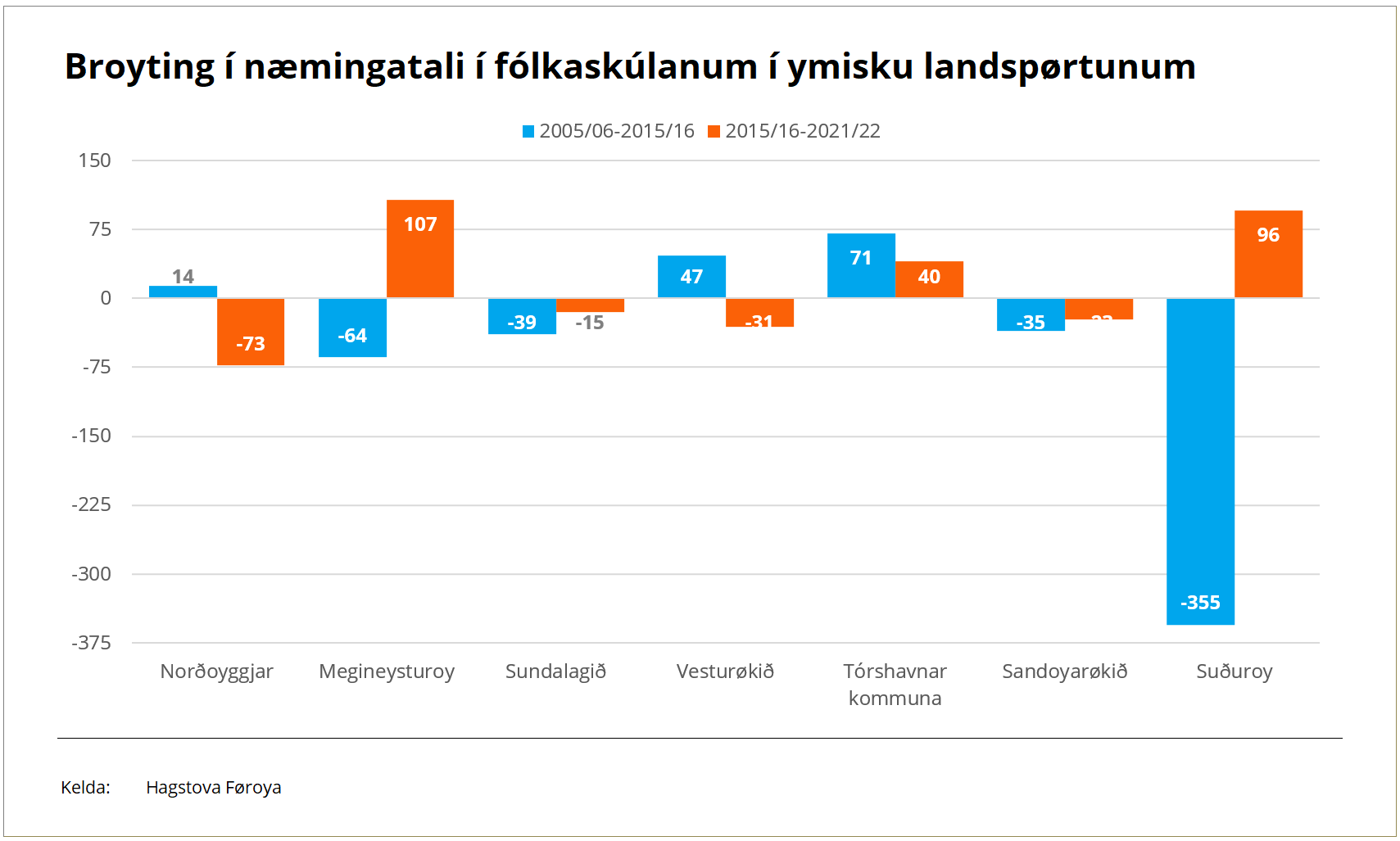Public school
07. Oct 2021
Fewer schoolchildren now than in 2005

In 2005, almost 7,600 pupils attended Faroese public schools (municipal primary and lower-secondary schools). Ten years later, this figure had come down to 7,200. The period from 2015 to today has seen significant population growth, yet the number of pupils has only increased by 100 in this period.
2005-2015:
Despite a population growth of 540 people in the 1 July 2005 -1 July 2015 period, the total number of pupils dropped by 361. The biggest decrease was in lower-secondary year groups, with 415 fewer pupils. The number of primary school pupils (1st-7th formers) dropped by 73 – a combined decrease of 488 pupils. Meanwhile, prep school classes saw an increase of 117 pupils.
2015-2021:
The next six years (1 July 2015 – 1 July 2021) saw a population growth of 4,500 people. Despite this, the number of pupils increased by a mere 100. The number of pupils in prep schools and remedial classes increased by 270, while the number of primary school pupils (1st-7th formers) dropped by 128 and the number of lower-secondary pupils dropped by 41.
Changes in pupil numbers by region

2005-2015:
Suðuroy had by far the biggest decrease in pupil numbers in this period.
2015-2021:
The number of pupils dropped by 107 in Eysturoy and by 96 in Suðuroy. In comparison, the country’s largest municipality, Tórshavn, saw an increase of only 40 pupils.
Pupil distribution by sex
There is a slight majority of boys in all year groups up to the 7th form. This figure turns into a slight majority of girls in the 8th and 9th form. In the 10th form and in remedial classes, boys outnumber girls by a large margin.
[px-graph-1]
Outlook for the coming years
As mentioned above, the number of school pupils has gone down in the past 15 years. The figures vary significantly across the regions. Statistic Faroe Islands’ population forecast indicates an increase of 430 individuals in the 5-15 age group. One-third of this increase will be in Tórshavn municipality, with the remaining two-thirds spread across the rest of the country. Projecting 20 years into the future, the population forecast indicates a slight decrease in this age group. A small decrease is forecast for the capital region and a small increase outside the capital region.
[px-graph-2]